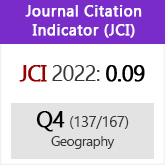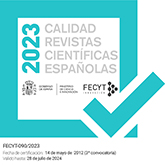La extensificación de los secanos herbáceos españoles: Efectos territoriales y sociales de la nueva P.A.C. de la Unión Europea.
DOI:
https://doi.org/10.3989/egeogr.1995.i221.717Keywords:
Spanish agriculture, The giving up of farmlands, Common agrarian policy, Territorial and social effects of CAPAbstract
From the beginning of the eighties the European Commission has been propitiating a significant turn to the CAP that at the end has been specified in the Reform of 1992. The financial problema, the growth rate of agrarian production above the consumption rate and the new environmental approach gave rise to the new framework in wich the extensification of the productive systems sets up as a necessary requirement. The strong pressure on the arable land opens the way to the more and more obvious presence of the fallow land, to which lands taken away from the stable cultivation join. The impact of this new approach makes itself felt specially in the cereal-producing districts; decrease of cultivable lands and a foreseeable loss of requested UTAs are circumstances that may strongly affect the rural space with low population density and a very aged social structure.
Downloads
Downloads
Published
How to Cite
Issue
Section
License
Copyright (c) 2021 Consejo Superior de Investigaciones Científicas (CSIC)

This work is licensed under a Creative Commons Attribution 4.0 International License.
© CSIC. Manuscripts published in both the printed and online versions of this Journal are the property of Consejo Superior de Investigaciones Científicas, and quoting this source is a requirement for any partial or full reproduction.All contents of this electronic edition, except where otherwise noted, are distributed under a “Creative Commons Attribution 4.0 International” (CC BY 4.0) License. You may read here the basic information and the legal text of the license. The indication of the CC BY 4.0 License must be expressly stated in this way when necessary.
Self-archiving in repositories, personal webpages or similar, of any version other than the published by the Editor, is not allowed.















